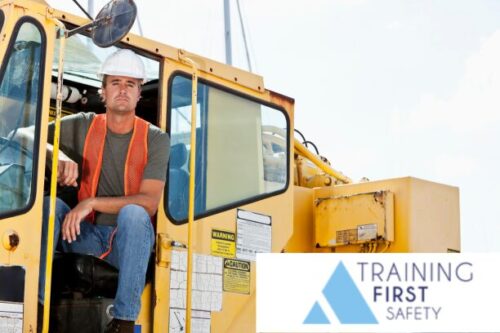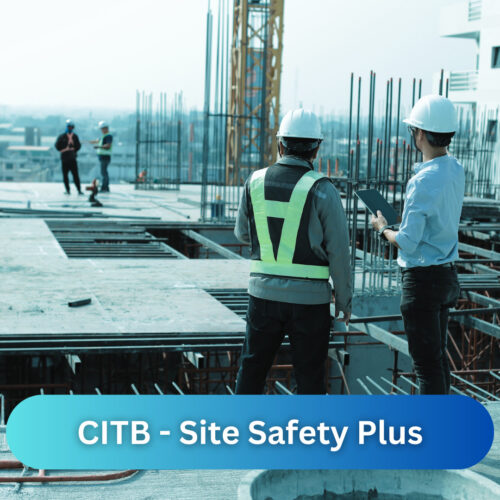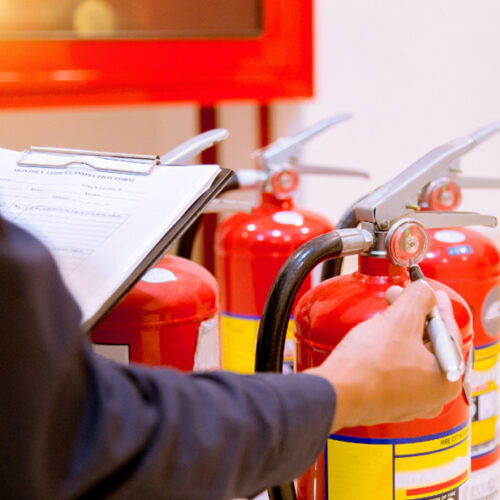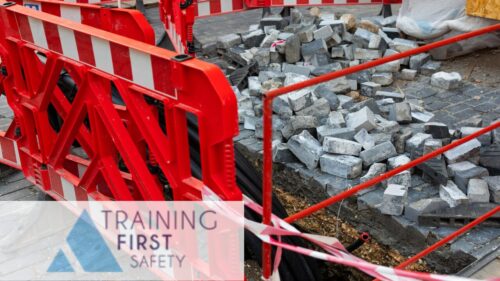- Have an increased awareness of the nature and properties of asbestos and its effects on health, including the increased risk of lung cancer for asbestos workers who smoke.
- Be familiar with the types, uses and likely occurrences of asbestos in buildings and where appropriate items of plant.
- Know how to avoid the risks from asbestos by understanding.
- Where to obtain information on asbestos in premises prior to commencing work.
- What to do if suspicious materials are found.
- How to use appropriate workplace precautions, including the risk assessment process, or seek advice on workplace precautions, in respect of the risks of asbestos.
- Undertake work activities in a safe manner and without risk to themselves or others.
- Have an awareness of the key aspects of the asbestos regulations and how they fit into the broader context of health and safety legislation.
- Procedures to be followed when coming into unintentional contact with asbestos containing materials (ACMs) and an understanding of the appropriate emergency arrangements.
-
 Asbestos Awareness Asbestos awareness training is required to be given to employees whose work could foreseeably expose them to asbestos. In particular, it should be given to all demolition workers and those workers in the refurbishment, maintenance and allied trades. Asbestos awareness training is not training to work with any forms of asbestos. It is likely to form the first part of training for work with asbestos, but on its own it is does not meet the legal requirements laid down under Control of Asbestos Regulations 2012 (CAR). The course objective is to provide an awareness and develop the knowledge amongst employees as regards the hazards and risks posed by asbestos containing materials (ACMs). The course further gives an overview of the legislative measures in place to permit employees to safeguard themselves and others affected by work activities. Learning Objective On successful completion of this course, delegates should be able to:
Asbestos Awareness Asbestos awareness training is required to be given to employees whose work could foreseeably expose them to asbestos. In particular, it should be given to all demolition workers and those workers in the refurbishment, maintenance and allied trades. Asbestos awareness training is not training to work with any forms of asbestos. It is likely to form the first part of training for work with asbestos, but on its own it is does not meet the legal requirements laid down under Control of Asbestos Regulations 2012 (CAR). The course objective is to provide an awareness and develop the knowledge amongst employees as regards the hazards and risks posed by asbestos containing materials (ACMs). The course further gives an overview of the legislative measures in place to permit employees to safeguard themselves and others affected by work activities. Learning Objective On successful completion of this course, delegates should be able to: -

IOSH Managing Safely
Who is Managing Safely for? Managing Safely is designed for manager and supervisors in any sector, and any organisation worldwide. They won’t suddenly become safety experts – but they’ll get up to speed on the practical actions they need to take and gain the knowledge and tools to tackle the safety and health issues they’re responsible for. Managing Safely makes a powerful case for safety and health being an integral part of day-to-day management and business. Managing Safely covers:- Assessing risks
- Controlling risks
- Understanding responsibilities
- Understanding hazards
- Investigating incidents
- Measuring performance
-

Vehicle Banksman:
This course aims to instruct you as an operative to safely conduct vehicle signalling operations. Who Should Attend? Any person who as part of their work duties may need to direct traffic. What Will I Learn? At the end of the course you will be able to: Identify relevant legislation and guidance Correctly demonstrate approved signals Identify hazards associated with signalling operations Explain why effective communication is needed between driver and banksman.Course Content:
Introduction and Aims Regulations What is a Banksman Understanding the Roles of the Driver & Banksman Understanding the Key Issues arising out of Reversing & Manoeuvring Vehicles Identify Danger Areas When Manoeuvring Vehicles Demonstrate recommended Signals Theoretical & Practical Assessments
-
 Course Overview This one-day seats course is suitable for staff with management or supervisory responsibilities. SEATS Course Overview This one day classroom based course will provide candidates with an introduction to environmental issues on construction sites. This course meets the basic environmental knowledge that the sub-contract chain is required to prove to major contractors. It also covers the environmental aspects of the CITB Health, safety and environment (HS&E) test. SEATS Aims and Objectives The delegate will gain knowledge and understanding in:
Course Overview This one-day seats course is suitable for staff with management or supervisory responsibilities. SEATS Course Overview This one day classroom based course will provide candidates with an introduction to environmental issues on construction sites. This course meets the basic environmental knowledge that the sub-contract chain is required to prove to major contractors. It also covers the environmental aspects of the CITB Health, safety and environment (HS&E) test. SEATS Aims and Objectives The delegate will gain knowledge and understanding in:- what is meant by the term ‘environment’
- how to deal with archaeology and heritage on a construction project
- effective waste management
- pollution controls, and why the environment should be protected
- the use of environmental management systems
- why it is important to be a good neighbour and responsible contractor
- understand the need to protect the environment
- implement environmental management systems into the management of the site
- have an understanding of the impact archaeology and heritage can have on a site
- identify the principles of the good neighbour initiative
- appreciate the need to be a responsible contractor
-

Overview
During the workshop, a Fit2Fit accredited tester will give the attendees an understanding of how to conduct face fit training themselves and gain knowledge on the variations of masks available. Delivered by a Fit2Fit accredited tester, the Face Fit Testing Workshop is designed to prepare delegates to be able to carry out Face Fit Tests competently.Throughout the day, topics covered include:
- Health & Safety Law
- Types of Respiratory Protective Equipment (RPE) and correct selection
- Types of hazardous substances and their health impacts
- Why Face Fit Testing matters
- How to conduct a Face Fit Test
What is required to pass the Face Fit Train the Tester Workshop?
The delegate must show competence and understanding as they will need to be able to conduct Face Fit Tests themselves correctly. The delegate will need to successfully demonstrate a Face Fit Test and complete a written assessment. Once they have completed the above, the tutor will deem the delegates prepared to con-duct Face Fit Tests. -
 The PASMA Towers for Users training course is the best known and most recognised qualification for the safe assembly and dismantling of aluminium scaffold towers. The morning session is in the classroom, followed by a short written test. The afternoon session is practical training, involving the building and dismantling of scaffold towers.
The PASMA Towers for Users training course is the best known and most recognised qualification for the safe assembly and dismantling of aluminium scaffold towers. The morning session is in the classroom, followed by a short written test. The afternoon session is practical training, involving the building and dismantling of scaffold towers.Who Is This Course For?
Anyone who works with the assembly and dismantling of aluminium mobile access towers on site or in a commercial environment.Course Structure
- Employer’s and employee’s legal responsibilities
- Tower components
- Pre-use inspection
- Safe methods of erection & dismantling
- Variances in manufacture
- Common hazards
- Practical training
-
 It’s a mandatory requirement under PUWER 1998 that all users must be competent and all users must be trained to ensure they have the knowledge, understanding and skills required to use tools safely at work.
It’s a mandatory requirement under PUWER 1998 that all users must be competent and all users must be trained to ensure they have the knowledge, understanding and skills required to use tools safely at work.Course objectives/outcomes:
- H&S Laws and Regulations · understanding your legal duty – PUWER (Provision and Use of Work Equipment Regulations) 1998 and Health & Safety at Work Act 1974
- Responsibilities of employer and employee
- Hazards & Risks involved · hand arm vibration, dust and respiratory hazards
- Noise action levels, lower and upper daily exposure levels
- Wheel markings · what they mean – what you need to know
- How to carry out pre-use checks and inspections of equipment and working area
- Importance of issuing task and product specific PPE with examples
- Bench Grinders, Petrol Cut Off Saw, 110V and battery handheld can be covered if requested when booking
- Test paper/ questions/ handouts and review
-

CITB – Health and Safety Awareness
Overview This course highlights potential hazards when working on site and provides practical advice on keeping yourself and your colleagues safe. It covers your individual and employer’s responsibilities, including what you can do if you think anyone’s health and safety is being put at risk. At the end of the course you will have an understanding of:- the need to prevent accidents
- health and safety law
- how your role fits into the control and management of the site risk assessments and method statements
- performing safely and asking for advice
- how to report unsafe acts to prevent an accident
-

Fire Marshall
The Fire Marshal course is to provide personnel with a knowledge of how to prevent a fire from happening and the duties of a fire marshal in the workplace. The fire marshal training course consists of both theory and practical sessions which include: • Fire Procedures Duties of a Fire warden/marshal • Fire prevention • Using Fire extinguishers & Types of extinguishers • Action on discovering a fire • Common causes of fire • Fire drills and evacuation • Fire safety legislation • Fire safety precautions • The chemistry of fire Upon successful completion of the CIEH fire safety awareness training course, you will be entitled to a Certificate of completion. Who Should Attend? Personnel who will be responsible for the role of a fire warden/fire marshal would benefit from taking this training course. -

Course objectives/outcomes:
- H&S Laws & Regulations – understanding your legal duty under the Work at Height Regulations 2005
- Responsibilities of employers and employees
- Determining if a ladder/step ladder is the right equipment to use using the 3 point ‘hierarchy of control’ risk assessment guide
- How to choose the right equipment for a task
- Carrying out pre-use inspections with ladder tag systems, how often these must be done and who is responsible for them
- How to use equipment safely to minimise risk – sensible safety precautions
- Storage, maintenance and keeping kit safe and legal
- Importance of issuing and using correct PPE
- How to select the correct classified equipment for a task and inspection procedures
- Practical sessions throughout
- Test paper/questions/ handouts and review
-
 Manual Handling is the moving of any load by bodily force, including lifting, putting down, pushing, pulling or carrying. All employees by law should be trained in the correct techniques in association with the product/equipment they will be using during the working day.
Manual Handling is the moving of any load by bodily force, including lifting, putting down, pushing, pulling or carrying. All employees by law should be trained in the correct techniques in association with the product/equipment they will be using during the working day.Course objectives/outcomes:
H&S Laws & Regulations – Manual handling Operation Regulations 1992 (amended 2002)- The responsibilities of the employer and employee
- What exactly is manual handling, and what types of injuries can occur
- Good posture, biology of the back, combined with how you should look after it
- Techniques for lifting, lowering, pushing, pulling and carrying loads
- Risk factors and how injuries can occur
- Mechanical Aids available on the market to assist with your manual handling assessments
- The importance of issuing and using the correct PPE for the task product and sequence of works
- Importance of adhering to your existing company Manual Handling policy
- Safe handling technique videos
- Test paper/questions/ handouts & review

